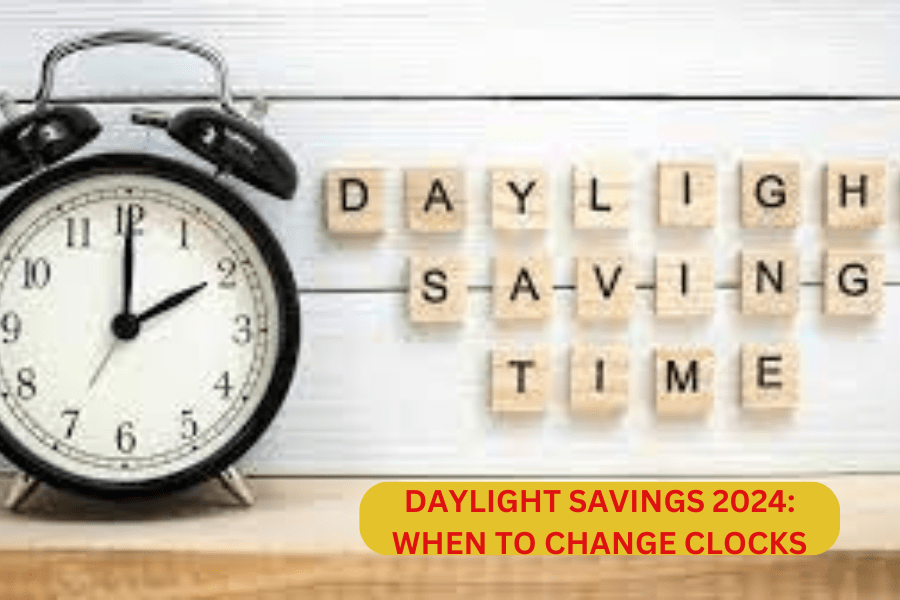
Daylight Savings Time appears again this weekend. If you forget to change your clocks, please, don’t blame us that we didn’t give you a Daylight Savings 2024 reminder.
There’s such frustration among people that a casket company is proposing to put an end to Daylight Saving Time.
So what is DST? When does the time change? Does daylight saving end in 2024?
Here are all those answers and more as we start our venture into spring.
Daylight Saving Time kicks off at 2 a.m. on Sunday, March 10, 2024, just nine days before spring starts. While this change will cause later Sunsets, it also triggers a later Sunrise.
When will Daylight Saving Time change in the U.S. in 2024?
During spring, participating states move their clocks forward by an hour on the second Sunday in March. Daylight Saving Time wraps up in the fall, with states turning their clocks back by an hour on the first Sunday of November.
When will Daylight Saving Time change 2024 Spring forward in the U.S.?
In the U.S., clocks will officially spring forward at 2 a.m. Sunday, March 10, 2024.
Will I gain or lose an hour of sleep for Daylight Saving Time at 2 a.m. on March 10, 2024?
When Daylight Saving Time begins, we lose an hour of sleep as clocks “spring forward” and move ahead at 2 a.m. In November, when DST ends, clocks “fall back” by an hour, giving people an extra hour of sleep.
Daylight Saving Time commercial
A casket company is advocating for a change to Daylight Saving Time to save lives. How? Bury Daylight Saving time changes permanently.
Why does Daylight Saving Time change at 2 a.m.?
In an interview with Time Magazine, author Michael Downing referred to his book, “Spring Forward: The Annual Madness of Daylight Saving Time,” to explain why clocks change at 2 a.m. for DST, highlighting Amtrak and the railroads as the main reason clocks change at 2 a.m. for DST.
When Daylight Saving Time was introduced, there were no trains departing from New York City’s station at 2 a.m. on Sundays.
“Sundays at 2 a.m. were chosen because it caused the least disruption to train travel across the country,” explained Downing.
What states in the U.S. don’t observe Daylight Saving Time?
While most states change clocks for Daylight Saving Time, there are some exceptions.
Most parts of Arizona and the entire state of Hawaii don’t follow Daylight Saving Time. In addition, Puerto Rico, Guam, American Samoa, and the U.S. Virgin Islands don’t take part in it either.
Indiana only began observing Daylight Saving Time in 2006.
Under the Uniform Time Act of 1966, states can choose not to follow Daylight Saving Time. However, any change would require approval from the U.S. Congress since federal law doesn’t permit Daylight Saving Time to be observed year-round.
According to the National Conference of State Legislatures, two bills introduced in New Jersey’s state legislature in 2022 are still awaiting decisions. These bills propose making Daylight Saving Time the permanent official time throughout the year.
According to the NCSL, at least 29 states looked into or were thinking about 75 bills linked to Daylight Saving Time last year. The NCSL reports that 19 states have either approved resolutions or passed laws advocating for permanent Daylight Saving Time.
In March 2022, the U.S. Senate approved the Sunshine Protection Act, but it didn’t move forward in the House of Representatives, meaning it never reached President Joe Biden’s desk. In 2023, 12 U.S. senators reintroduced the bill aiming to make Daylight Saving Time permanent.
In a 2022 CBS News poll, it was found that 46% of Americans prefer having Daylight Saving Time all year long. Meanwhile, 33% prefer having Standard Time throughout the year, and the remaining 21% are content with the current system of switching between the two.
What is the origin of modern Daylight Saving Time?
During World War I, the German Empire came up with a plan that’s quite similar to what we now call Daylight Saving Time.
Their thought was that by doing this, they could save fuel during the war. So, in 1916, the German Empire became the first to adjust their clocks to make better use of daylight.
Benjamin Franklin is often said to be the one who first had the idea of using daylight more effectively. Back in 1784, during a visit to Paris, he thought that too much sunlight was going to waste. In a letter to a newspaper in Paris, he jokingly suggested taxing anyone who kept their windows closed after sunrise.
Franklin figured this tax would make people use sunlight instead of candles more, to save money. That’s what Michael Downing, the author of Spring Forward: The Annual Madness of Daylight Saving Time, says.
When did the U.S. adopt Daylight Saving Time?
Back in 1918, the United States passed its first law for Daylight Saving Time to save fuel. It made a comeback during World War II.
During the war, the U.S. made Daylight Saving Time the standard all year round starting from February 9, 1942. They called it “War Time” and hoped it would save energy, says the U.S. Department of Defense. This continued until September 1945, when Japan surrendered.
Back in 1973, President Nixon passed a law called the Emergency Daylight Saving Time Energy Conservation Act. This law made Daylight Saving Time permanent in the United States. It aimed to lessen confusion because some parts of the country followed DST while others didn’t. However, less than a year later, they canceled the law.
